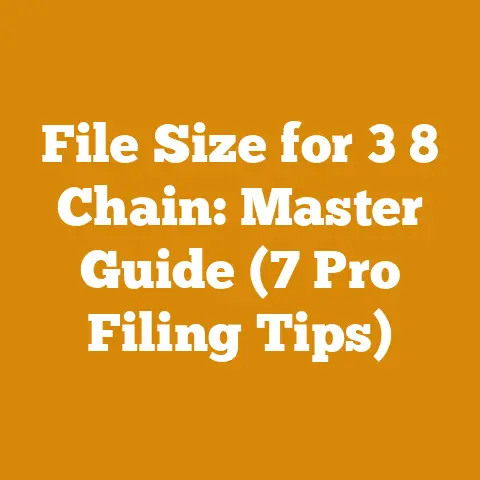Coconut Tree Trimming Basics (Climbing & Pruning Tips for Pros)
Craftsmanship isn’t just about the end product; it’s about the journey, the understanding of the material, the dance between skill and nature.
In the world of wood, whether we’re talking about felling towering trees or splitting logs for a cozy winter fire, the principles of craftsmanship guide us.
For me, it’s always been about more than just getting the job done.
It’s about honoring the wood, respecting the tools, and ensuring safety every step of the way.
This article delves into the art and science of coconut tree trimming, blending the practical with the strategic to help you navigate this unique landscape.
Coconut Tree Trimming Basics: Climbing & Pruning Tips for Pros
Coconut tree trimming isn’t your average tree service gig.
It’s a specialized skill that demands respect for heights, an understanding of tree biology, and a commitment to safety.
As someone who’s spent years climbing and pruning various trees, including those majestic palms, I’ve learned that success hinges on a blend of proper technique, the right equipment, and a healthy dose of common sense.
In this article, I’m going to share my insights, experiences, and practical tips to help you become a proficient coconut tree trimmer.
Assessing the Task at Hand: Planning is Paramount
Before you even think about strapping on your climbing gear, take the time to assess the situation.
This initial planning phase is crucial for safety and efficiency.
Understanding the Tree’s Condition
- Visual Inspection: Start with a thorough visual inspection of the tree.
Look for signs of disease, pest infestations, or structural weaknesses.
Discolored leaves, unusual growths, or cracks in the trunk are all red flags. - Tree Health: A healthy coconut tree will have vibrant green fronds and a sturdy trunk.
If the fronds are yellowing or drooping excessively, the tree may be stressed or diseased. - Load Estimation: Estimate the weight of the fronds you’ll be removing.
Coconut fronds can be surprisingly heavy, especially when wet.
This is crucial for planning your descent and ensuring your ropes and gear are adequate.
Identifying Hazards
- Power Lines: Be acutely aware of any power lines near the tree.
Maintain a safe distance at all times.
This is non-negotiable.
Contacting a power line can be fatal. - Obstacles: Identify any obstacles on the ground that could pose a risk to people or property.
This includes buildings, vehicles, and pedestrian traffic. - Weather Conditions: Never climb in high winds or heavy rain.
These conditions significantly increase the risk of accidents.
Developing a Trimming Plan
- Objectives: Define the objectives of the trimming.
Are you removing dead fronds, thinning the canopy, or harvesting coconuts? - Pruning Techniques: Determine the appropriate pruning techniques for the specific situation.
Avoid over-pruning, which can stress the tree and make it more susceptible to disease. - Safety Protocols: Establish clear safety protocols for the entire operation.
This includes communication signals, emergency procedures, and first-aid availability.
Gear Up: Essential Equipment for Coconut Tree Trimming
Having the right gear is essential for safety and efficiency.
Climbing Equipment
- Climbing Harness: Invest in a high-quality, comfortable climbing harness that fits properly.
Look for a harness with adjustable leg loops and waist belt for a secure and comfortable fit. - Climbing Rope: Use a static climbing rope specifically designed for tree work.
Ensure the rope is in good condition, free from cuts, abrasions, or excessive wear. - Ascenders and Descenders: Choose reliable ascenders and descenders that are compatible with your rope.
Practice using these devices on the ground before attempting to use them in the tree. - Lanyards: Use multiple lanyards for secure positioning in the tree.
Lanyards should be adjustable and equipped with locking carabiners. - Carabiners: Use only locking carabiners that are rated for climbing.
Inspect carabiners regularly for damage or wear. - Helmet: A sturdy climbing helmet is essential for protecting your head from falling debris.
Choose a helmet that meets industry safety standards. - Eye Protection: Wear safety glasses or goggles to protect your eyes from dust, debris, and sap.
- Gloves: Use durable work gloves to protect your hands from cuts and abrasions.
- Footwear: Wear sturdy climbing boots with good traction.
Pruning Tools
- Hand Saw: A sharp hand saw is essential for making clean cuts on smaller branches.
Look for a saw with a curved blade for efficient cutting. - Pole Saw: A pole saw is useful for reaching higher branches without having to climb as high.
Choose a pole saw with a lightweight, durable pole. - Chainsaw: In some cases, a chainsaw may be necessary for removing larger branches.
Only use a chainsaw if you are properly trained and experienced. - Pruning Shears: Pruning shears are useful for trimming smaller fronds and leaves.
Safety Equipment
- First-Aid Kit: Always have a well-stocked first-aid kit on hand.
- Communication Device: Carry a cell phone or two-way radio for communication with ground crew.
- Warning Signs: Use warning signs to alert people to the presence of tree work.
- Ground Crew: A well-trained ground crew is essential for safety and efficiency.
Climbing Techniques: Ascending with Confidence
Climbing a coconut tree requires a combination of strength, technique, and awareness.
It’s not a race; it’s a controlled ascent.
Rope Walking Techniques
- Footlock: The footlock technique involves wrapping the climbing rope around your feet and using your legs to ascend.
This technique requires practice and coordination. - Prusik Hitch: Using Prusik hitches allows you to ascend the rope by sliding the hitches upward.
This technique is more efficient than the footlock for longer climbs.
Using Ascenders
- Attaching Ascenders: Attach ascenders to the climbing rope according to the manufacturer’s instructions.
- Alternating Ascenders: Alternate the ascenders, moving one at a time, to ascend the rope.
- Maintaining Balance: Maintain balance by keeping your weight centered over the rope.
Safety Considerations
- Tie-In Points: Always tie into a secure anchor point before starting to climb.
- Slack Management: Keep slack out of the climbing rope to prevent falls.
- Communication: Maintain constant communication with the ground crew.
Pruning Techniques: Sculpting for Health and Aesthetics
Pruning coconut trees is more than just hacking away at fronds.
It’s about promoting the tree’s health, enhancing its aesthetics, and ensuring safety.
Removing Dead Fronds
- Identifying Dead Fronds: Dead fronds are typically brown, dry, and brittle.
- Cutting Techniques: Cut dead fronds close to the trunk, but avoid damaging the trunk tissue.
- Safety Precautions: Be careful when removing dead fronds, as they can be heavy and unpredictable.
Thinning the Canopy
- Selective Pruning: Thin the canopy by selectively removing fronds to improve air circulation and sunlight penetration.
- Maintaining Balance: Maintain the tree’s natural shape and balance when thinning the canopy.
- Avoiding Over-Pruning: Avoid over-pruning, which can stress the tree.
Harvesting Coconuts
- Identifying Ripe Coconuts: Ripe coconuts are typically brown and have a slightly soft husk.
- Cutting Techniques: Use a sharp machete or saw to cut the coconuts from the tree.
- Safety Precautions: Be extremely careful when harvesting coconuts, as they can be heavy and fall with considerable force.
Chainsaw Use in Coconut Tree Trimming: A Word of Caution
While chainsaws can be useful for removing larger branches, they should only be used by experienced professionals who are properly trained and equipped.
Safety Precautions
- Personal Protective Equipment (PPE): Always wear appropriate PPE, including a helmet, eye protection, hearing protection, gloves, and chainsaw chaps.
- Chainsaw Maintenance: Keep the chainsaw properly maintained and sharpened.
- Safe Cutting Techniques: Use safe cutting techniques to avoid kickback and other hazards.
- Working at Heights: Never use a chainsaw while climbing unless you are specifically trained and equipped for aerial chainsaw work.
Alternatives to Chainsaws
- Hand Saws: For most coconut tree trimming tasks, hand saws are a safer and more appropriate option than chainsaws.
- Pole Saws: Pole saws can be used to reach higher branches without having to climb as high.
Optimizing Workflow: Efficiency is Key
Efficient workflow is crucial for maximizing productivity and profitability.
By streamlining your processes, you can save time and money while minimizing risks.
Pre-Climb Checklist
- Equipment Inspection: Inspect all equipment before each climb.
- Weather Check: Check the weather forecast and avoid climbing in adverse conditions.
- Communication Briefing: Conduct a communication briefing with the ground crew.
In-Tree Efficiency
- Strategic Positioning: Position yourself strategically in the tree to minimize unnecessary movement.
- Efficient Cutting Techniques: Use efficient cutting techniques to minimize fatigue.
- Debris Management: Develop a system for managing debris to avoid cluttering the work area.
Post-Climb Procedures
- Equipment Storage: Store equipment properly to prevent damage.
- Site Cleanup: Clean up the work site to remove debris and hazards.
- Documentation: Document the work performed and any observations about the tree’s health.
Material Sourcing: Sustainable Practices
Sustainable material sourcing is essential for protecting the environment and ensuring the long-term health of coconut tree populations.
Responsible Harvesting
- Selective Harvesting: Practice selective harvesting to avoid over-harvesting.
- Avoiding Damage: Avoid damaging the tree during harvesting.
- Replanting: Encourage replanting efforts to maintain coconut tree populations.
Waste Management
- Recycling: Recycle coconut husks and other waste materials whenever possible.
- Composting: Compost organic waste materials to create nutrient-rich soil.
- Proper Disposal: Dispose of non-recyclable waste materials properly.
Case Studies: Success Stories in Coconut Tree Trimming
Let’s look at a couple of real-world examples where strategic planning and execution led to successful coconut tree trimming projects.
Case Study 1: Residential Pruning Project
A homeowner in Hawaii contacted me to prune several coconut trees on their property.
The trees were overgrown and posing a safety hazard due to falling fronds.
- Planning: I started by assessing the trees’ condition and identifying potential hazards, including power lines and nearby structures.
I then developed a pruning plan that focused on removing dead fronds and thinning the canopy to improve air circulation. - Execution: I used a combination of hand saws and pole saws to remove the fronds safely and efficiently.
I also took care to avoid over-pruning the trees. - Results: The project was completed safely and successfully.
The homeowner was pleased with the results, and the trees were healthier and more aesthetically pleasing.
Case Study 2: Commercial Harvesting Project
A coconut farm in the Philippines hired me to harvest coconuts from their trees.
The farm was struggling to meet demand due to inefficient harvesting practices.
- Planning: I worked with the farm owner to develop a harvesting plan that optimized efficiency and minimized waste.
I also trained the farm workers on safe harvesting techniques. - Execution: We implemented a system for efficiently collecting and transporting the coconuts.
We also focused on minimizing damage to the trees during harvesting. - Results: The project resulted in a significant increase in coconut production.
The farm was able to meet demand and increase its profitability.
Common Challenges and Solutions
Coconut tree trimming isn’t without its challenges.
Here are some common issues and potential solutions.
Challenge: Working at Heights
- Solution: Use proper climbing techniques, safety equipment, and communication protocols to minimize the risk of falls.
Challenge: Handling Heavy Fronds
- Solution: Use ropes and pulleys to lower heavy fronds safely.
Challenge: Dealing with Pests and Diseases
- Solution: Identify and treat pests and diseases promptly.
Consult with a certified arborist for guidance.
Challenge: Minimizing Waste
- Solution: Recycle or compost coconut husks and other waste materials.
Current Trends and Best Practices
The field of coconut tree trimming is constantly evolving.
Here are some current trends and best practices to keep in mind.
Arborist Certification
- Importance: Consider becoming a certified arborist to demonstrate your knowledge and skills.
- Benefits: Certification can increase your credibility and help you attract more clients.
Drone Technology
- Applications: Drones can be used for inspecting trees, assessing damage, and even applying treatments.
- Efficiency: Drones can save time and money compared to traditional methods.
Sustainable Practices
- Focus: Embrace sustainable practices to protect the environment and ensure the long-term health of coconut tree populations.
- Benefits: Sustainability can enhance your reputation and attract environmentally conscious clients.
Takeaways and Next Steps
Coconut tree trimming is a rewarding but challenging profession.
By mastering the techniques, using the right equipment, and prioritizing safety, you can become a proficient and successful coconut tree trimmer.
Remember to:
- Prioritize Safety: Always put safety first.
- Plan Carefully: Develop a detailed plan before each project.
- Use the Right Equipment: Invest in high-quality equipment and maintain it properly.
- Practice Efficient Techniques: Streamline your workflow to maximize productivity.
- Embrace Sustainability: Protect the environment by using sustainable practices.
Now, go out there, climb those trees with confidence, and prune with purpose!
The knowledge and skills you’ve gained here will serve you well in your journey as a coconut tree trimmer.
Good luck, and stay safe!






